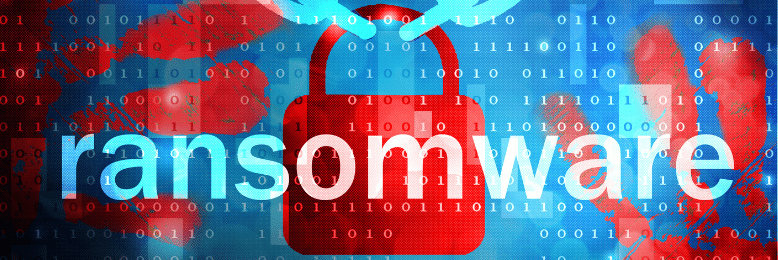What is Ransomware? [Updated]
September 17th, 2021 | 5 min. read

With ransomware attacks happening every 11 seconds in 2021, it has become one of the most prevalent and dangerous cyber threats in recent history. Find out what it is, how it works, and what you can do to prevent your business from falling victim.
Editor's note: This post was originally published on September 1, 2021, and has been revised for clarity and comprehensiveness.
Imagine yourself in this scenario: You receive an email from someone who seems to be a member of your team asking you to check out a link. It seems innocuous enough. However, once you click on the link, a hacker gets access to your network.

They will then encrypt your most important data, grounding your business operations to a halt. The only way the attacker will give you back your data is by paying them millions of dollars.
What you've just read is a basic ransomware attack. And it's easily one of the most dangerous malware threats in recent history. That is partly due to how often these attacks occur and the extent of damage they can inflict on businesses.
Here's a chilling statistic: experts estimate that a ransomware attack will occur every 11 seconds in 2021. In addition, this year also saw the largest ransomware payout ever recorded in the world. It was made by an insurance company that shelled out $40 million to buy back their data.
Now, you might think that a small operation like yours isn't going to be a target. That may have been true a few years ago. However, ransomware attacks on small businesses have increased ten-fold due to the pandemic. In fact, it was reported recently that half (55%) of the ransomware victims in the US were businesses with under 100 employees.
But don't panic just yet. At ITS, we've spent over a decade helping businesses check for vulnerabilities and bolster their cybersecurity to prevent such attacks from happening.
In this article, we'd like to give you basic information about ransomware and, more importantly, what you can do to prevent them.
What is Ransomware?

Ransomware refers to any malicious software that cybercriminals use to block you from accessing your data. Attackers will often encrypt essential files on your system and add extensions to hold them "hostage" until a ransom is paid.
This type of malware is an extortion scheme that can infect computers via an email, instant message, or website.
How does a ransomware attack work?
The most common vector ransomware can take to deliver the virus to your computer is through phishing scams. These are attachments that usually come to the victim as an email or message, masquerading as a file they should trust. Once the file is downloaded and opened, the malware installs itself, allowing the attacker to take over the victim's computer.
Once the device is under the intruder's control, they will then encrypt vital data that will render your machine useless or disrupt your business operations. Other tactics include the criminal collecting the victim's sensitive information and extorting them for a fee in exchange for keeping the information private.

That's what ransomware is—digital extortion. And the scariest thing is that in some cases, the victims don't get their data back even after paying the ransom. And worse, they become recurring targets.
Six ways to prevent ransomware attacks
The threat landscape may seem dire, but it doesn't mean you are completely helpless. The silver lining is that there are multiple ways to bolster your defenses to prevent attacks. Applying these methods will make it more difficult for a would-be attacker making it more likely for them to look for another target instead.
Here are the six ways you can prevent ransomware attacks:
1. Secure your computer

The first move you can make is by following simple security protocols, such as using complex passwords and encrypting sensitive data.
If you have a physical server on-premises, ensure that it's stored in a secure location.
Using two-factor authentication is another simple way to boost your security significantly. It is a mechanism that adds a secondary login procedure, virtually eliminating brute force methods of entry.
These simple steps help ensure only authorized personnel can access certain data.
2. Use privacy software when using public Wi-Fi

One of the easiest ways for attackers to penetrate your defenses is through the use of public Wi-Fi. Keeping your connection private is crucial in preventing potential attackers from sneaking into your network.
To create a safe connection, consider using a VPN and firewall. This will help block your IP address and allow you access to the internet via a secure tunnel.
3. Train your team

The most common mode of delivery of malware like ransomware is through phishing and social engineering tactics. Cybercriminals will use every trick in the book to deceive you into giving your data away, allowing them to access your systems.
Teaching your team how to spot attacks and what to do when they encounter such tactics can mean the difference in keeping your business safe. Conducting effective cybersecurity awareness training is an inexpensive method that can help protect your data whether your team is on-site or working remotely.
4. Backup your data

You may have the best security software, but an attacker may still be able to penetrate.
Cyber attacks are continuously evolving, and it's possible that at this very moment, a new threat that can bypass all known security software is in the works. That is why you ought to have a plan for a disaster.
Using a backup and disaster recovery (BDR) server to store sensitive data before ransomware gets in will help you recover much faster. A BDR can make backups of your data every few minutes and can get your system back up and running within hours through the use of a virtual server.
We've helped in cases wherein an attacker tried to extort our clients by freezing access to their data. Thankfully, we were able to thwart the attempts because we had a BDR server in place. That allowed us to restore their data and patch the breach much faster.
However, a backup does not necessarily suggest you're out of the woods yet. You are still going to have to consult with a security specialist to ensure that the software is correctly disabled. The data backup will help you reduce the impact of ransomware, but it won't prevent it from happening again.
5. Invest in cyber insurance

With cybercrime on an unprecedented rise, cyber insurance is a vital investment you should also consider. They can help you recover from an attack and ensure business continuity.
Applying for a policy will often require you to upgrade your current cybersecurity efforts up to the current standards. While the process may be expensive and time-consuming, it is a sound investment for the future.
Some cyber insurance policies can help businesses recover from attacks by covering a portion of the ransom demand. They can also cover damage inflicted on your devices as well as help pay for the lawsuit should you successfully find the culprit of a cyber attack.
6. Work with a reliable IT team

No matter the size of your company, it's a good idea to have a robust security infrastructure. That requires the work of experienced and reliable experts. Whether you are working with an in-house IT department or a Managed IT Service Provider (MSP), relying on their expertise can help you stay one step ahead of cyber threats.
Ready to keep ransomware at bay?
Such types of attacks are something that everyone is vulnerable to, but that doesn't mean the next target has to be you. Taking the time and investing in the right cybersecurity measures can help keep you from falling prey. That might seem like a big project, but it's one worth doing.
If you don't have the confidence that you can bolster your security, you can rely on a good MSP to help you along the way.
At ITS, we’ve helped hundreds of businesses boost their cybersecurity efforts for over a decade.
Want to find out where your current cybersecurity measures stand? Fill out this form for a free IT security assessment.
Mark Sheldon Villanueva has over a decade of experience creating engaging content for companies based in Asia, Australia and North America. He has produced all manner of creative content for small local businesses and large multinational corporations that span a wide variety of industries. Mark also used to work as a content team leader for an award-winning digital marketing agency based in Singapore.
Topics:
